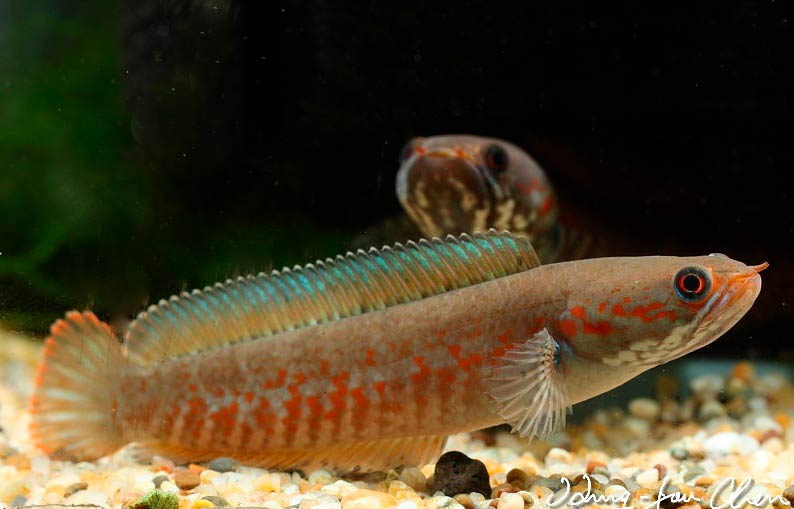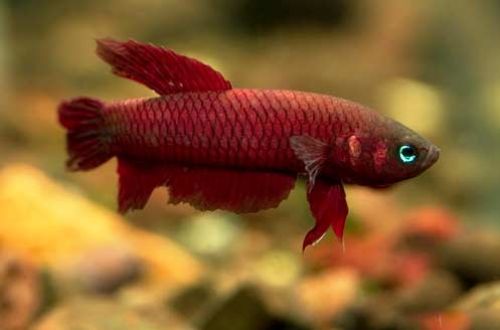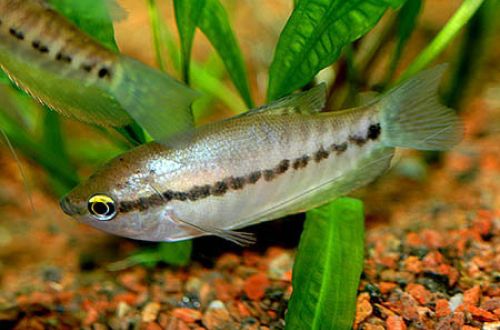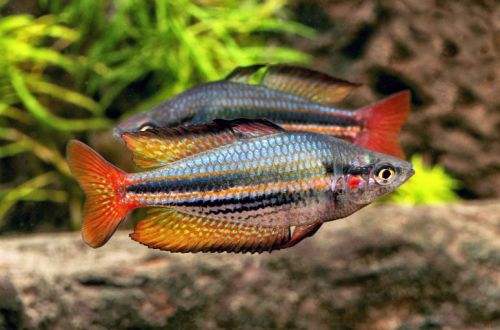
andrao snakehead
The andrao snakehead, scientific name Channa andrao, belongs to the family Channidae (Snakeheads). The fish received its scientific name in 2013. The description was given by researcher Ralf Britz. However, it was already well-known among aquarists and therefore acquired many other names, the most famous of which are the Assam Snakehead and the Blue Blehera Snakehead. Among the Russian-speaking audience, it is often referred to as the Pygmy Blue Snakehead or Andryusha because of the similarity in sound in English pronunciation.
It is considered the most popular object for photographing among all representatives of the genus. A significant part of the photographs that can be found in the public domain on request “Snakeheads” are dedicated to this particular species. The explanation is simple – widespread in aquariums and contrasting memorable coloring.
Contents
Habitat
Comes from South Asia. It is considered endemic to the swampy area of the Brahmaputra river basin, located between the Raidak and Sangosh rivers in the north-east of India in the vicinity of the city of Barobisha.
The habitat is characterized by relatively cool water, which often drops to 15 ° C even in the summer months, which is associated with the active melting of glaciers in the Himalayas. The water level is also unstable and is determined by the dry and wet seasons.
A typical biotope is not a deep swamp under a forest canopy with muddy water and a large amount of aquatic vegetation, including flooded ones.
During the dry months between monsoons, swamps can dry up and turn into muddy backwaters. The snakehead waits out this time in deep holes filled with water, getting out of them for hunting.
Description

Adults reach a length of 11 cm or more. In males, the body color is dark with many blue or blue marks (specks, dots). In females, orange colors additionally appear. The fins and tail are decorated with blue pigments in the spaces between the rays with light edging.
Since in the wild they live in drying up reservoirs, in the course of evolution they developed an adaptation mechanism that allows them to breathe atmospheric air. It is thanks to this that they can find in holes and leave them while hunting.
Behavior and Compatibility
Fry and grown fish are able to live in groups, but as they grow older, becoming sexually mature, they begin to show aggression towards each other. In the process of growing up, male-female pairs can form, which in the future are able to get along with each other. The rest is single content.
The andrao snakehead is a predator, but due to its relatively modest size, it can be found together with species of comparable size that live in the water column or near the surface. As neighbors in the aquarium, you should not consider bottom and territorial fish, for example, from among catfish and char.
Brief information:
- The volume of the aquarium – from 70 liters.
- Water and air temperature – 15-28°C
- Value pH — 6.0–8.0
- Water hardness – 3–20 dGH
- Substrate type – any soft dark
- Lighting – subdued
- Brackish water – no
- Water movement – little or no
- The size of the fish is 10–11 cm.
- Nutrition – live or fresh/frozen food
- Temperament – can be aggressive, quarrelsome
- Keeping alone or in a formed pair male / female
Maintenance and care, arrangement of aquariums
The optimal size of the aquarium for one fish starts from 70-80 liters. The height of the tank is not as important as the area of the bottom. The depth can be as low as 30 cm. The fish prefers dim lighting and plenty of hiding places on the bottom. The design uses a soft substrate, a layer of fallen leaves, natural driftwood, floating and rooting plants.
Snakeheads can crawl out of the aquarium. For this reason, it must be equipped with a cover or other protective device. At the same time, there must be an air gap between the lid and the surface of the water for the fish to breathe.
Hardy, adapts well to a wide range of pH and GH values, and is not sensitive to the oxygen content of the water.
Makes special demands on temperature. Seasonal fluctuations in water temperature are recommended. For example, in the summer months it may be at the upper limit of the allowable range, and in the winter – at the bottom. Thus, for several months there is no need to heat the aquarium.
Maintenance is standard and consists in weekly replacement of part of the water with fresh water, combined with the removal of accumulated waste, preventive maintenance of equipment, cleaning glass and design elements (if necessary) from plaque.
Food
In nature, it feeds on insects and their larvae, worms and other invertebrates, as well as small fish, amphibians and everything that it can swallow.
Alternative products are acceptable in the home aquarium, such as fresh or frozen pieces of fish meat, shrimp, mussels, earthworms, large bloodworms, etc. Supplements from conventional dry food are welcome, which should be considered solely as a source of vitamins and trace elements, and not a replacement basic diet.
Sources: Wikipedia, FishBase





